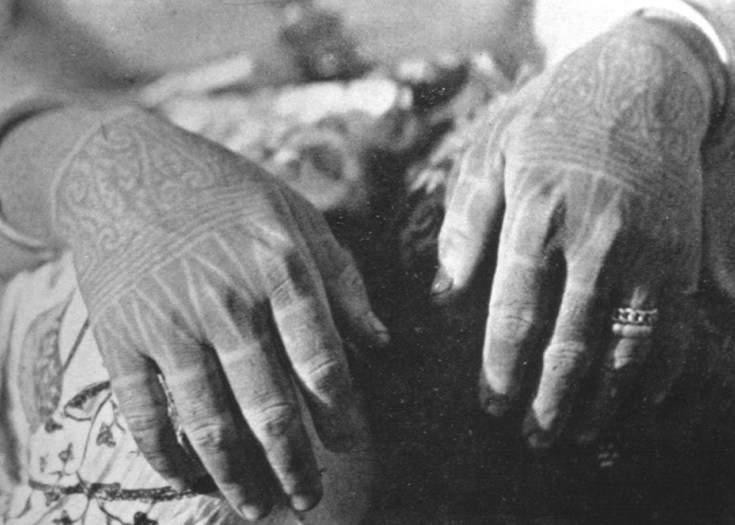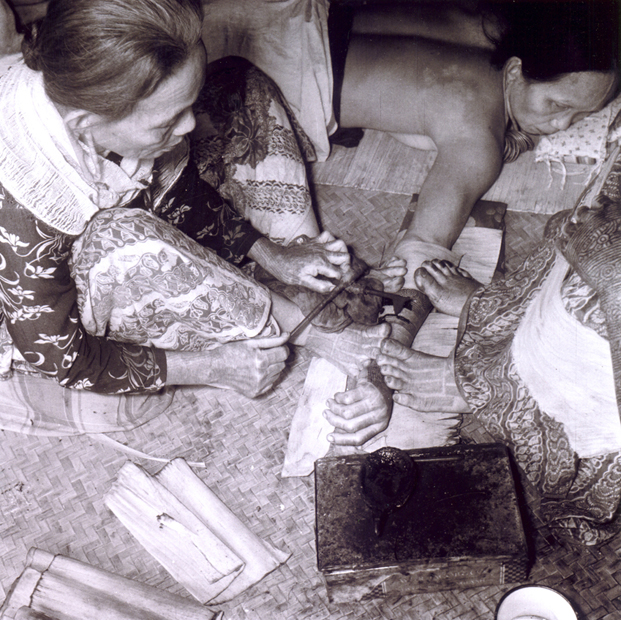Traditional Kayan Tattoos
The Kayan Dayak tribe and tattoo tradition are two things that go hand in hand. As a form of body art, tattooing has a rich symbolic meaning that is also interpreted personally by the wearer. For the Dayak tribe, tattoos are essentially vital because they serve as a symbol or part of their identity. Tattoos are known as “tedak” in the Kayan language.
In the community, only women are permitted to have tattoos on their bodies; men, however, are only permitted to obtain tattoos after participating in a war and successfully beheading an enemy. A Kayan woman can begin getting tattoos on her body at the age of ten. It will take four years to complete a tattoo from start to completion depending on her ability to endure the pain of tattooing. Furthermore, the tattoo is also viewed as a representation of beauty. The woman is more attractive the more tattoos she has on her body.
Kayan tattoo artists were ladies who were very skilled in hand-tapping and knowledgeable about intricate serial designs that were typically inked on the backs of hands and forearms, the legs and feet of other ladies in their community. There are three primary categories in the Kayan community's art of tattooing: usuu, which covers the entire hand, kassa, which covers the entire foot, and anih hapii, which covers the thighs.
The main motif of the Kayan arts community is aso or called "dog-dragon", an unseen creature combination of a dog and a dragon and is believed to climb a vineyard in the forest. In addition, to removing dangerous spirits, aso also serves as a status symbol.
When a member of the Kayan tribe sports a tattoo or tedak, it denotes their ability to handle responsibilities, such as those that come with being a daughter of aristocratic descent or displaying their marital status (single or married). It also serves as a symbol of their success in various professions, such as those of shaman (dayung), weaver, bead maker, healer, or tattoo artist.
As for males, a man's ability to protect his family, defends his community, serve as a warlord or leader, and is attractive to women is demonstrated by his tattoos.
Indeed, tattoos in the Kayan tribe has very special meanings and representations for the community and we hope readers can appreciate the beauty in this art form.

(Hand tattoos on a Kayan woman – Image taken from sarawaktourism.com, Source: Lars Krutak)

(Tattooing process – Image taken from sarawaktourism.com, Source: Lars Krutak)
References
Anggo, F., & Laja, L. (2018). Traditional Tattoo Motifs As A Symbol Of Social Status Of The Women In Orang Ulu (Kayan-Kenyah) Community In Sarawak. International Journal Of Business And Management, 2(1), 07-11. https://doi.org/10.26666/rmp.ijbm.2018.1.2
The Fading Heritage of Traditional Kayan Tattoos. Rakan Sarawak. (2021). Retrieved 13 August 2022, from https://www.rakansarawak.com/v3/2021/10/10/the-fading-heritage-of-traditional-kayan-tattoos/.
Wahyuni, Maria & Wibawa, Arya & swandi, i. (2021). Semiological Analysis: Kayan Dayak Tribal Hand Tattoo --Palarch's. PalArch's Journal of Archaeology of Egypt/ Egyptology. 18. 322-335.